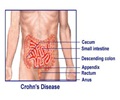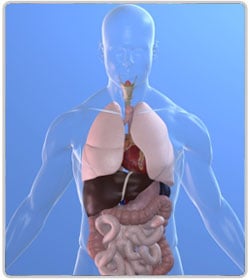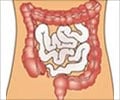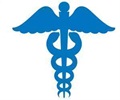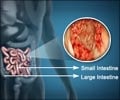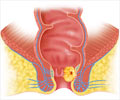- Anal Cancer - A Review - (http://europepmc.org/article/PMC/3616949)
- Anal Cancer: An Overview - (https://www.ncbi.nlm.nih.gov/pubmed/17522240)
- Anal Cancer - Symptoms and Causes - (https://www.mayoclinic.org/diseases-conditions/anal-cancer/symptoms-causes/syc-20354140)
- What Is Anal Cancer? - (https://www.webmd.com/cancer/what-is-anal-cancer#1)
- Anal Cancer Stages - (https://www.cancer.org/cancer/anal-cancer/detection-diagnosis-staging/staging.html)
- Radiation Therapy For Anal Cancer - (https://www.ncbi.nlm.nih.gov/books/nbk537342/)
- Anal Cancer Treatment - (https://www.dana-farber.org/anal-cancer/)
- Can Anal Cancer Be Prevented? - (https://www.cancer.org/cancer/anal-cancer/causes-risks-prevention/prevention.html)
What is Anal Cancer?
Anal cancer is a rare tumor and constitutes 2 to 4% of all large intestine cancers. It can be either anal squamous cell cancer, Cloacogenic cancer, ano-rectal or anal adeno-carcinoma, or anal Melanoma.
The number of cases has increased in the past few years. This directly correlates to an increase in the number of HIV positive patients in whom this cancer is commonly found. For example - San Francisco in United States has a higher incidence of anal cancers due to a larger number of homo-sexual population.
Anal Canal Anatomy
The anus or anal canal is the lowermost part of the digestive tract, after the rectum, through which feces exits the body. It is an inch and a half long. The muscles surrounding the anus form ring-like structures called the internal and external sphincters. These sphincters control the passage of stool. The inner lining of the canal is divided into two parts by a line called the dentate line. Different types of cells line the two parts. Anal cancers can be divided into four types depending on the type of cells they arise from:
- Squamous cell cancer (the most common anal cancer)
- Cloacogenic cancer (arises from above the dentate line)
- Rare tumors like adenocarcinoma (arises from local glands)
- Melanoma
Like other cancers, anal cancer spreads locally along the anus and adjacent organs like the bladder and vagina. It also spreads to small bean-shaped masses called lymph nodes and to distant organs like the liver.(1✔ ✔Trusted Source
Anal Cancer - A Review
Go to source)
What are the Causes and Risk Factors for Anal Cancer?
A virus called human papilloma virus (HPV) causes anal cancer. It spreads through sexual contact. People at increased risk of developing anal cancer include:
- HIV patients – HPV infection is more common in HIV patients, thus predisposing them to anal cancer. The reduced immunity in HIV patients also favors the virus growth
- People with multiple sexual partners
- People older than 50 years of age
- People who practice anal intercourse including homosexual males
- Cigarette smokers (2 to 5 fold increase in risk)
- People with genital or anal warts and women with cervical cancer - HPV causes these conditions, hence these patients run at a risk for anal cancer
- People with decreased immunity such those taking medicines after organ transplants to prevent rejection (risk can increase by 200 fold in transplant patients)
- Patient’s with Crohn’s disease also have been reported to have a higher risk for anal cancer(2✔ ✔Trusted Source
Anal Cancer: An Overview
Go to source)

What are the Symptoms and Signs of Anal Cancer?
Anal cancer is more common in females than in males. Some people with anal cancer may not have any symptoms. Others may experience one or more of the following:
- Bleeding from the anus
- Pain
- Itching
- Ulcer formation
- Feeling of a swelling at the anus
- Change in bowel habits
- Narrowing of stools

The above symptoms may also be seen in other anal conditions such as piles / Hemorrhoids and anal fistula. A careful examination by the doctor will help to differentiate anal cancer from other conditions.
In half the patient pain and bleeding is the first symptom of presentation. In over one-third the cancer usually has progressed to the lymph nodes in the groin on the same side by the time the patient first presents. This spread up-stages the disease.
Spread of the cancer can take place commonly to liver and lungs and rarely to bones.(3Anal Cancer - Symptoms and Causes
Go to source)
How do you Diagnose Anal Cancer?
The following tests may be carried out in a patient suspected with anal cancer:
- Anoscopy: The doctor may directly visualize the inner lining of the anus through an instrument inserted into the anus
- Physical examination: During examination, the doctor examines the patient by looking at the anus. He also inserts a gloved finger into the anus to feel for any abnormality
- Ultrasound probe: The doctor inserts a tube with an ultrasound probe at the end to look out for any abnormality. He biopsies any suspicious area and sends it to a pathology laboratory for testing
- CT scan / PET scan / Ultrasound are tests carried out check if the tumor has spread to other parts of the body
It is important to detect cancer early to prevent its spread to other areas. If a person is prone to anal cancer, the following test can be carried out at frequent intervals:
- Anal swab: The doctor takes a swab of the anus and tests the cells collected for cancer. This test can be conducted at regular intervals
Any tissue that is removed is sent for biopsy to get the final confirmation of the cancer.(4What Is Anal Cancer?
Go to source)
How is Anal Cancer Staged?
A cancer is often staged to describe the size and degree of spread to lymph nodes and other organs. It enables the doctor to decide on the treatment and probable prognosis or outcome of the cancer. Anal cancer is divided into the following stages:
- Stage 0 - Abnormal cells are detected in the innermost lining of the anus
- Stage 1 - The tumor is 2 cm or less in size and has not spread to lymph nodes or other organs
- Stage 2 - The tumor is more than 2 cm in size and has not spread to lymph nodes or other organs
- Stage 3:
- The tumor may be of any size and has invaded either nearby lymph nodes or organs
- It is divided into stage III A and stage III B depending on the lymph nodes involved
- Stage 4 - The tumor has spread to distant organs such as lungs and liver or bones(5✔ ✔Trusted Source
Anal Cancer Stages
Go to source)
How do you Treat Anal Cancer?
The preferred treatment for anal / ano-rectal cancer is chemotherapy and radiation. Side effects of this treatment include inflammation of the anus with ulcer formation, narrowing and damage to the lining. Other side effects are diarrhea and damage to the bone marrow. Surgery is indicated under following circumstances:
- The cancer is very small and superficial
- The cancer has spread to other parts of the body
- The sphincter function of the anus is lost
- The patient cannot tolerate radiation
- The cancer recurs
In the first case, only the anal growth is removed
In the options 2 to 5, the anal growth is removed with the part of intestine and the opening is closed.
The lower end of the intestine is brought out through the abdomen through a surgical opening called a colostomy. The feces that exit through this opening are collected in a disposable bag attached to the abdomen.
Though chemotherapy and radiation have their side effects, their curative rate almost is similar to that of surgery. The patient can thus avoid a colostomy and have a better quality of life.(6✔ ✔Trusted Source
Radiation Therapy For Anal Cancer
Go to source)
Combining various types of treatment depends on the stage of the cancer.
In Stage 0 cancer - surgical removal of the abnormal area is adequate.
Stages I, II and III, are treated with radiation with/without chemotherapy. Surgery is carried out in these cases if the tumor is small and has not spread, or if it has recurred.
Treatment of stage IV does not result in a cure. Surgery, radiation and/or chemotherapy may be administered to reduce the patient’s symptoms.
The patient should undergo regular examinations even after apparent cure to prevent cancer recurrence.(7✔ ✔Trusted Source
Anal Cancer Treatment
Go to source)

What is the Prognosis of Anal Cancer?
Radiation plus chemotherapy instead of surgery has improved the quality of life in anal cancer patients. This treatment has helped patients to maintain their normal bowel function and their chances of cure.
In the United States, the 5-year survival rate of localized cancers that are treated is more than 80%, whereas of those spread to distant organs is 30%.
How do you Prevent Anal Cancer?
There is no fool-proof way to avoid the cancer completely.
- However, if exposure to HPV and HIV virus is reduced the likelihood of developing this cancer comes down remarkably.
- A vaccine against HPV virus is also likely to help in preventing this cancer.
- In 2010, the U.S. Food and Drug Administration (FDA) approved the HPV vaccine Gardasil for anal cancer prevention in females and males ages 9 to 26.
- Avoid anal sexual intercourse which increases the risk of HIV and HPV infection.
- Use a condom. Even though condoms protect against HIV, they cannot protect against HPV.
- Quit smoking as it increases the risk for anal cancer.(8✔ ✔Trusted Source
Can Anal Cancer Be Prevented?
Go to source)




